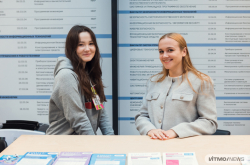Equal opportunities for all
Digital accessibility is a concept that ensures that all digital services such as websites, social media platforms, software, and other digital products can be used by everyone, including people with disabilities.
Each group of users has its own specific needs, which means that different tools need to be developed for each group. These tools are often referred to as assistive technologies. Digital accessibility specialists work on developing these tools.
People with visual disabilities use hearing to orient themselves in space – including online. That’s why they rely on screen readers, special software for web use and mobile devices that reads out everything happening on the screen. For the visually impaired, it can be hard to distinguish small images and details, which is why they benefit from specially designed pages, with a bigger scale and font, a more convenient color scheme, and the option to disable images and replace them with their descriptions.
For people with hearing impairments, it’s important that videos have subtitles or sign language interpretation. Professional interpreters can communicate not only the meaning of what’s happening, but also the rhythm and emotional valence.
People with cognitive (e.g., ADHD or dislexia) or intellectual disabilities (e.g., Down syndrome) find it hard to navigate overloaded designs or long abstract texts. That’s why when developing a website for such audiences, it’s better to leave a lot of space between blocks and use simple forms, high contrasts, and larger fonts. The language should also be adapted, with shorter sentences and simple terms.
However, people without disabilities can also benefit from digital accessibility: for instance, instead of watching a video on full volume in public transport, you are more likely to just watch it with subtitles. Other examples are the dark theme that causes less visual fatigue, special reading modes, and interfaces for seniors who are more comfortable reading larger fonts.
Read also:
This Is a Sign: Translating Popular Science into Sign Language
Digital accessibility in numbers
According to data from Yandex, 51% of users on iOS and Android use at least one accessibility feature on Yandex Browser – and among VK users, there are 77% of such users. They use the dark theme, adjust font size and visibility, rely on screen readers, and watch videos with subtitles or mono sound.
However, according to Alyona Dzhumagulova, despite the popularity of assistive technologies, far from all digital products are equipped with them.
“Major companies, such as VK, Yandex, and Dodo Pizza, adapt their products to be accessible to various user groups, but in other cases increasing digital accessibility is a decision to be made by a company. Over 50% of entrepreneurs believe that their products are not popular among people with hearing or visual impairments. Moreover, it’s hard to measure the actual number of such users. At the same time, 74% of people with disabilities experience difficulties when purchasing products. It’s a vicious circle: no demand – no adapted products – and thus no new users,” says Alyona.
How to change it
Promote digital accessibility at the governmental level. For example, in September 2024 the Russian Ministry of Digital Development, Communications and Mass Media issued an updated list of requirements that will make governmental websites more accessible to people with visual and hearing impairments.
Train new experts. There’s already a new IT specialization: accessibility engineer. Such jobs are available to people with visual impairments; these experts test the convenience of digital services and offer recommendations on improving them. For example, they check if a website has sliders and pop-up windows that won’t be captured by a screen reader, if the website can be scaled up to 200%, and if alternative text describes images or buttons fully. Accessibility can be evaluated thanks to special documents, such as the Web Content Accessibility Guidelines (WCAG) by the World Wide Web Consortium, the Russian digital accessibility standard (ГОСТ Р 52872-2019), or guides by such companies as Sberbank and MTS.
At ITMO, students can opt to study in the Master’s program Programming for the Visually Impaired that welcomes graduates of engineering specializations. Graduates of the program can get positions as systems administrators, DevOps engineers, as well as developers and accessibility engineers of specialized software and applications for people with visual impairments.

Evgeny Nekrasov, a graduate of the Master's program Programming for the Visually Impaired. Photo by ITMO.NEWS
In ITMO’s Master's program Multimedia Technologies, Design and Usability, students learn the fundamentals of human-computer interaction, interface design, and graphic design for systems and applications, including those for people with special needs. Graduates of the program become UX/UI, XR (augmented, mixed and virtual reality), multimedia, or game designers who can develop their own projects or conduct research on demand (for example, one of the projects included a study of the digital accessibility of the website of the Russian Museum).
Moreover, ITMO annually organizes the international conference WUD@ITMO to celebrate World Usability Day. At the event, experts in design and UI research share their cases and discuss ways to improve our interaction with information systems. The program includes lectures on interface design for people with disabilities.
Read also:
No Limits: Visually Impaired ITMO Graduate on Working as DevOps Engineer and Launching His Startup
ITMO Student Dmitry Vasilyev on Developing Apps for People With Disabilities
AI to the rescue
Digital accessibility can also be improved through AI technologies. There are already numerous examples of AI services that help make life easier for people with disabilities. For instance, assistants for the visually impaired, such as Seeing AI and Be My AI, use smartphone cameras to describe the objects around a person, interpret images, recognize printed text from photos, and can even vocalize this information.
For the hearing impaired, there are AI sign language interpreters, such as signfordeaf for English speakers and Surdohelp for those who speak Russian. These services translate sign language to text and vice versa, which helps users communicate with people who don’t know sign language.





